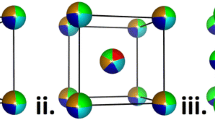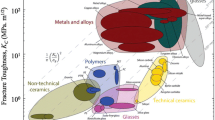Abstract
The multi-principal high-entropy alloys (HEAs) are promising new alloys. However, it is a challenge to screen out the suitable composition from the diverse combinations. Referring to the prototype AuCu3 with AB3-L12 structure, where it becomes a face-centered cubic (fcc) structure if element A and B are the same element, the site occupying tendencies of the elements and thermodynamic functions are predicted by using the sublattice model supported with first-principles total energy calculations. By considering the Gibbs energy of formation and the configurational entropy, the fcc HEAs in available literatures are examined, and the results of the quinary system with equal-atomic composition CoFeMnNiM and the hexbasic system with equal-atomic composition CoFeMnNiSmM are reported, respectively, where the element M is selected from the rest of the periodical table. When M=Cr, Zn, Ru, Rh, Pd, Re, Os, Ir, or Pt in the quinary systems CoFeMnNiM and when M=Ru, Pd, or Pt in the hexbasic systems CoFeMnNiSmM, respectively, the alloys are recommended to be potential fcc HEAs. The new approach opens a new way to mine the rich ores of HEAs.
Similar content being viewed by others
References
Cantor B, Chang I T H, Knight P, et al. Microstructural development in equiatomic multicomponent alloys [J]. Materials Science and Engineering A, 2004, 375: 213–218.
Yeh J W, Chen S K, Lin S J, et al. Nanostructure high-entropy alloys with multiple principal elements: Novel alloy design concepts and outcomes [J]. Advanced Engineering Materials, 2004, 6(5): 299–303.
Tong C J, Chen Y L, Chen S K, et al. Microstructure characterization of AlxCoCrCuFeNi high-entropy alloy system with multiprincipal elements [J]. Metallurgical and Materials Transactions A, 2005, 36: 881–893.
Zhang K B, Fu Z Y, Zhang J Y, et al. Nanocrystalline CoCrFeNiCuAl high-entropy solid solution synthesized by mechanical alloying [J]. Journal of Alloys and Compounds, 2009, 485: L31–L34.
Shun T T, Du Y C. Microstructure and tensile behaviors of fcc Al0.3CoCrFeNi high entropy alloy [J]. Journal of Alloys and Compounds, 2009, 479: 157–160.
Varalakshmi S, Kamara J M, Murty B S. Synthesis and characterization of nanocrystalline AlFeTiCrZnCu high entropy solid solution by mechanical alloying [J]. Journal of Alloys and Compounds, 2008, 460: 253–257.
Wang Y P, Li B S, Ren M X, et al. Microstructure and compressive properties of AlCrFeCoNi high entropy alloy [J]. Materials Science and Engineering A, 2008, 491: 154–158.
Yao C Z, Zhang P, Liu M, et al. Electrochemical preparation and magnetic study of Bi-Fe-Co-Ni-Mn high entropy alloy [J]. Electrochemical Acta, 2008, 53: 8359–8365.
Hu Z H, Zhan Y Z, Zhang G H, et al. Effect of rare earth Y addition on the microstructure and mechanical properties of high entropy AlCoCrCuNiTi alloys [J]. Materials and Design, 2010, 31: 1599–1602.
Yang Juan-yu, Zhou Yun-jun, Zhang Yong, et al. Solid solution formation criteria in the multicomponent alloys with high entropy of mixing [J]. Chinese Materials Science Technology and Equipment, 2007, 5: 61–63 (in Chinese).
Wu B, Zinkevich M, Aldinger F, et al. Prediction of the ordering behaviours of the O phase based on Ti2AlNb alloys by combining thermodynamic model with ab initio calculations [J]. Intermetallics, 2008, 16: 42–51.
Zheng Y D, Wu B, Zhang C H, et al. Prediction of the site occupations of the ThMn12-type intermetallics YFe12−x Mox by combining thermodynamic model with ab initio calculations [J]. Intermetallics, 2010, 18: 1465–1469.
Wang Y, Curtarolo S, Jiang C, et al. Ab initio lattice stability in comparison with CALPHAD lattice stability [J]. Computer Coupling of Phase Diagrams and Thermochemistry, 2004, 28: 79–90.
Wang X F, Zhang Y, Qian Y, et al. Novel microstructure and properties of multicomponent CoCrCuFeNiTix alloys [J]. Intermetallics, 2007, 15: 357–362.
Zhang K B, Fu Z Y, Zhang J Y, et al. Microstructure and mechanical properties of CoCrFeNiTiAlx high-entropy alloys [J]. Materials Science and Engineering A, 2009, 508: 214–219.
Zhang Y, Zhou Y J, Lin J P, et al. Solid-solution phase formation rules for multi-component alloys [J]. Advanced Engineering Materials, 2008, 10(6): 534–538.
Hsu C Y, Sheu T S, Yeh J W, et al. Wear resistance and high-temperature compression strength of fcc CuCoNiCrAl0.5Fe alloy with boron addition [J]. Metallurgical and Materials Transactions A, 2004, 35: 1465–1469.
Author information
Authors and Affiliations
Corresponding author
Additional information
Foundation item: the National Natural Science Foundation of China (Nos. 50971043 and 51001027), the National Innovation Experiment Program for University Students of China (No. 091038628), the Natural Science Foundation of Fujian Province (Nos. 2009J01239 and 2010J01278), the Scientific Research Staring Foundation for the Returned Overseas Chinese Scholars of Ministry of Education of China (No. LXKQ08050), and the Program for New Century Excellent Talents in University of Fujian Provincial (No. JA10013)
Rights and permissions
About this article
Cite this article
Zhang, Ch., Lin, Mh., Wu, B. et al. Explore the possibility of forming fcc high entropy alloys in equal-atomic systems CoFeMnNiM and CoFeMnNiSmM . J. Shanghai Jiaotong Univ. (Sci.) 16, 173–179 (2011). https://doi.org/10.1007/s12204-011-1113-8
Received:
Published:
Issue Date:
DOI: https://doi.org/10.1007/s12204-011-1113-8




